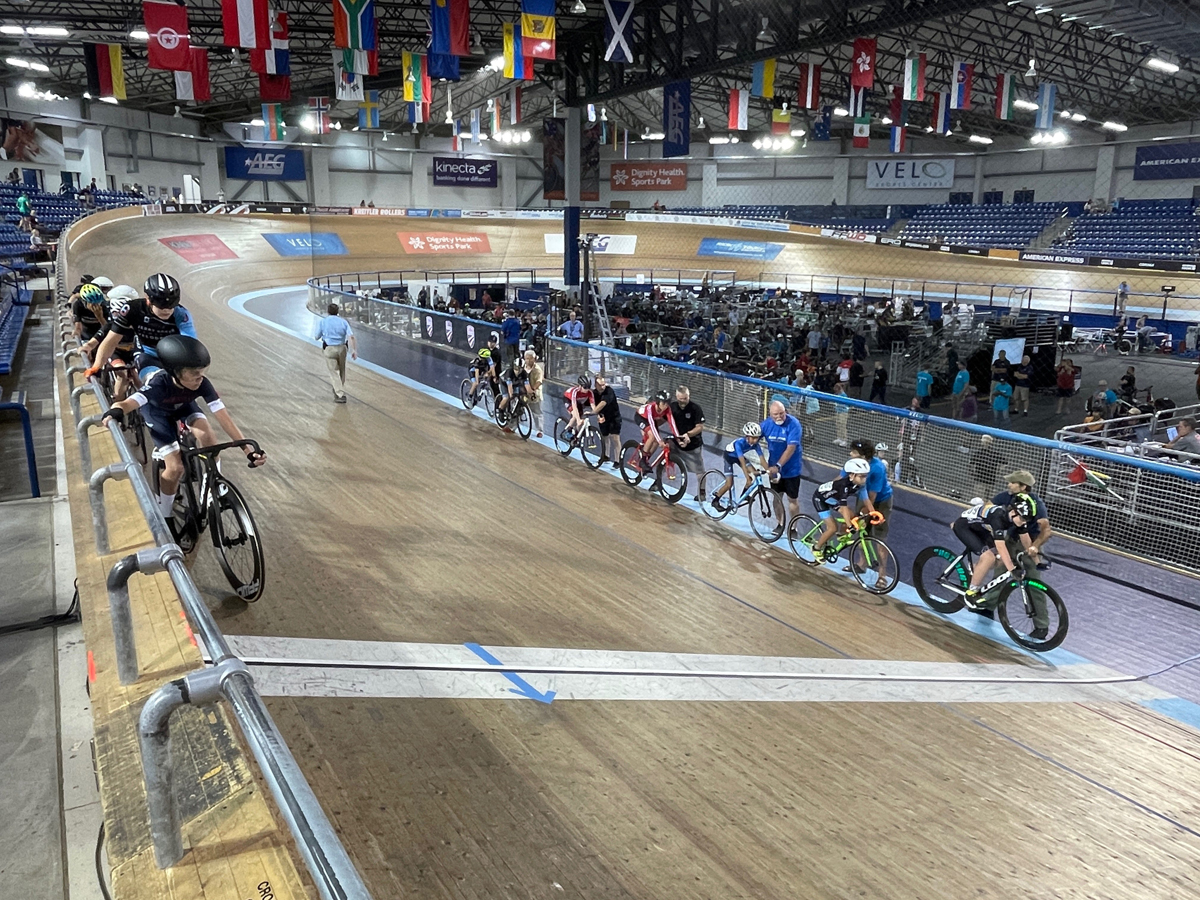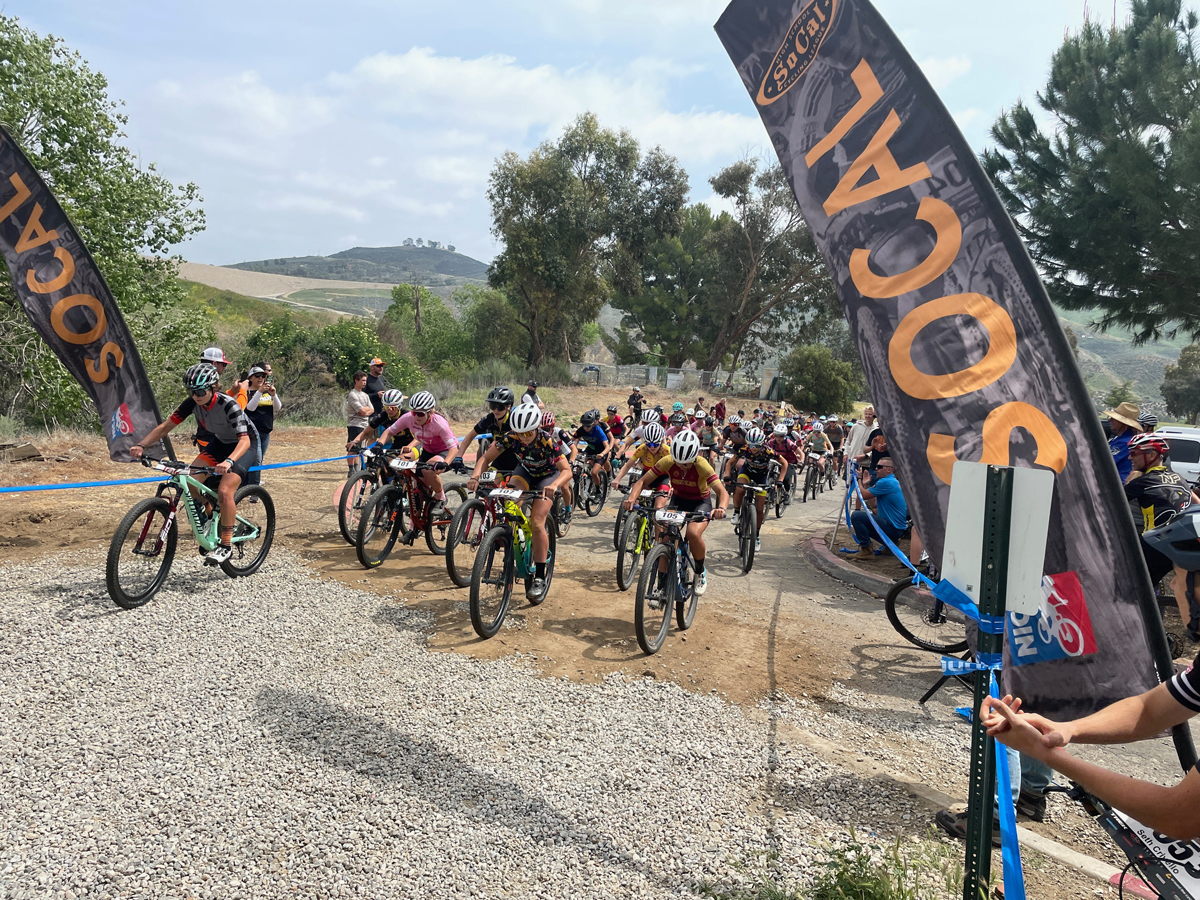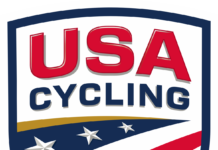By Peter Abraham — In July I drove 45 minutes south to the VELO Sports Center in Carson, CA to spectate at the USA Cycling Track National Championships. I wanted to root for local athlete and friend Chloe Patrick and watch World and Olympic Champion Jen Valente racing that night in the women’s points race. It was a Saturday night, and given that this is the best track cycling facility in the US and the biggest event of the year, I was hoping to see a packed house of fellow cycling fans. Instead, I was greeted by a mostly-empty facility with maybe 150 spectators in attendance.
Moreover, I was surprised by not only the small field sizes, but the lack of local athletes particularly in the junior races. If we can’t attract young people to race at the best facility in the nation, which is right in the middle of Los Angeles, how are we going to build a team for the 2028 Olympics?

This got me thinking about getting kids on bikes and into the sport of cycling. Are we, as a country, doing the best job we can building the sport? Or, in the cases where this is happening (on mountain bikes), how come we can’t continue the momentum into other cycling disciplines? I spoke to my friend Scott Johnson, owner of the Serious Cycling shops and their extensive cycling team. We decided to start talking to stakeholders around the country who could help us understand best practices and pain points within the American youth cycling journey.
Scott and I started by talking to people who had a handle on youth cycling in the US. We wanted to understand the issues from those on the front lines, including Dale Hughes at the Lexus Velodrome in Detroit, Steve Westover of the booming Team Booger in Seattle, David Huntsman of the LA Velodrome Racing Association, Drew Kogon from the VeloSport Club and Damon Turner at LA Bike Academy. And previous to this, I’d spoken with NICA high school MTB league President Amanda Carey, Scott Nydam from Silver Stallion in New Mexico, Roy Knickman from the now-defunct but wildly successful Lux junior program, and the St Augustine’s University HBCU cycling team
Many of the solutions we suggest below will require funding and staffing that don’t currently exist. We’re clear on that. How to come up with those resources is a subject for another post. So consider our ideas a starting point for discussion.
Here’s what we learned:

Problem 1: Cycling youth development programs are fragmented and disconnected.
Any healthy sport needs a strong foundation to build from. While there are some success stories across the youth cycling landscape, there’s nobody in charge of getting them working as a big system. Mountain bikes are currently the most attractive gateway for youth cyclists. NICA, the high school mountain bike league founded in 2009, has been a runaway success, with over 30,000 kids (counting the breakaway leagues) racing bikes in 33 states. NICA, as the world’s largest youth bike racing program, has essentially taken over the top of the funnel in the US to get kids started in competitive cycling.
NICA gets kids started on their cycling journey, but the organization is not set up to serve young athletes who want to try other disciplines outside of MTB. And there’s no path from high school racing into more competitive racing at the national and global level. This is not a bad thing; NICA is not trying to find the next Tour de France star. They’re just trying to get as many kids as possible onto mountain bikes so they can try out the sport and enjoy the outdoors. Some NICA athletes eventually find their way to road success (Neilson Powless, Megan Jastrab, Kevin Vermaerke, Sepp Kuss) or to the MTB World Cup (Kate Courtney, Gwendolyn Gibson). But those success stories are incidental, often driven by motivated parents or happenstance.
However, given the sheer volume of high school kids racing mountain bikes, there should be a way to connect passionate young athletes to other parts of the bike ecosystem: gravel, road, cyclocross, BMX, and track. Where does USAC, the national governing body for the sport, fit into this effort? Where does their job start and NICA’s stop? How does USAC collaborate with NICA (and other organizations) so that different programs are part of a national strategy? Given the USAC’s limited resources, it’s not possible for them to recreate what NICA has already built. But there are ways to work together. There is currently a huge gap between high school mountain biking and other forms of cycling. So even though we have the world’s biggest grassroots bike racing program, it’s not fully utilized as a tool to develop a lifelong love of cycling.
Solution:
USA Cycling should have regional staff whose only job is to serve as community managers and connectors who work hand in hand with organizations (NICA, college cycling) and events (CX, road, BMX, gravel, MTB, criteriums) with the goal of getting more young people into more cycling events. Someone needs to be “The CEO of Bike Racing” in the US.
Problem 2: Velodromes around the country are underutilized.
One thing I’ve learned in decades of youth sports work is that intentional onramps must be built that reduce the friction of getting new athletes into a program. The two best onboarding platforms for getting kids on bikes are 1) Mountain bikes (see above), and 2) track cycling. They both offer safe, closed course riding separate from cars and often in groups of other kids. Importantly, this is a scenario that parents are ok with; they can drop off their 12 year old without worrying about a distracted driver killing their child on the road. While youth MTB riding is growing, due to the thriving NICA league system, velodromes often sit empty. The 27 tracks in the US (here’s a map) are mostly owned by cities or counties that lack staffing, funding and expertise to build thriving youth programs at the tracks. These are also mostly outdoor facilities, so they’re unusable in bad weather or during the winter. The only indoor, wooden track that meets UCI guidelines is the VELO Sports Center in Los Angeles. It’s owned by Anschutz Entertainment Group, the world’s largest owner of sports teams and sports events. But the velodrome is an afterthought for them, just an add-on to the LA Galaxy soccer stadium next door. There’s nobody who has the job of filling the facility with kids and events seven days per week.
Solution:
Velodromes need full time community managers. Any track that wants a thriving community of riders needs someone who can build programs and reach out to schools, NICA leagues, parents and cycling clubs. Additionally, USA Cycling should have a national office sharing best practices in velodrome management to all of the different velodromes. They could coordinate across facilities for sponsorships, events and relationships with governing bodies.
Problem 3: The cycling development pathway for young riders is broken.
This is related to problem #1 above: there are a bunch of bridges missing between the various levels of the sport. In particular, getting from a NICA high school league to a travel team in either MTB or road is not an obvious transition. It’s possible, but oftentimes kids (and their parents) don’t know how to do it or who should guide them in the process. If a young athlete gets really good and wants to try racing internationally or at the U23 level, it’s another gap that’s hard to get across. Young bike racers are often asked by USA Cycling to fund their own trips to Europe, so the system is immediately biased against athletes without resources at their disposal. One very talented young professional cyclist told me that she had to choose between paying rent and taking a national team trip to race in Europe. So she stayed home. Road racing in particular is a sport that mostly happens in Europe. I would compare it to baseball, which is largely based in the United States. A young bike racer has to travel across the Atlantic to learn the sport. That’s expensive, time consuming and takes guidance. There is currently a lack of mentoring and education as it relates to racing in Europe, with just a few teams and programs that focus on that opportunity. USA Cycling has restarted their European development program, but it needs to grow much bigger to get enough kids learning and riding internationally.
Problem 4: College cycling needs a reboot
As a veteran of college cycling myself (UC Davis), I have seen how fun this sport can be: you’re with your friends, learning a sport together and traveling to races. The social nature of cycling aligns with being in college, where spending time with friends is often the most important thing in your life. And riding for a university team is a great next step for kids (like me) who got started racing in high school and want to keep going with the sport. There are 22 varsity (funded) teams in college cycling. These schools have some resources, maybe scholarships, paid coaches, equipment and are set up like a proper sports program. Mostly these are small colleges that have used their cycling team to build a national profile for the school: Lees-McRae in North Carolina, Milligan College in Tennessee, Marian University in Indianapolis and Colorado Mesa University in Grand Junction, Colorado are examples.
Then there are another 200 or so universities with club programs. These schools have no paid staff, no budget to speak of and no equipment. Many of the famous destination universities you’ve heard of — Stanford, UCLA, University of Colorado — have club cycling (all volunteer) teams. They’re entirely dependent on donations and the labor of their own athletes to keep the program going. I recently spent a couple years working with the new St Augustine’s University HBCU cycling team, and I saw how much work it is to get a program going from scratch. It takes fundraising, recruiting, event management, collaboration with university staff, equipment, transportation, and more. For college students, who are “just passing through,” to build and maintain a sports program is a huge ask. Often it’s too much. So club teams come and go depending how motivated the current group of athletes are. This DIY model in the non-varsity programs has set up college cycling to fail.
Solution:
As the existing governing body for college cycling, USAC should lean into this sport with greater involvement, more mentoring, and some fundraising help. In addition, more universities should build varsity programs. For a tiny fraction of the cost of a traditional college sports program, a school could build a thriving cycling team. They need continuity of staffing and some budget for travel and equipment. In addition, there needs to be a bridge built between NICA and college cycling, so high school kids know that riding is an option at the university level.
If we prioritize these solutions (along with many other things) we can get many more people outdoors and on bikes.
Please feel free to reach out with ideas or comments.
Peter started racing bikes in high school and has continued to ride his entire life. He also runs the Abraham Studio (ABRHM.com), which works with purpose-driven brands in sports, technology and healthcare to find their voices and tell their stories. He lives in Los Angeles, California.










